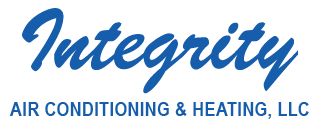
Ceiling fans are one of the most underrated ways to make your home more comfortable and cut energy costs. By improving air circulation and working in conjunction with your HVAC system, ceiling fans and energy efficiency are truly a perfect combination. They offer a practical, energy-efficient way to keep cool while reducing strain on your AC—helping you avoid unnecessary air conditioning repair.
In this blog, the experts at Integrity AC & Heating LLC discuss how ceiling fans can make your home feel more comfortable while increasing your HVAC efficiency. We'll also offer some HVAC efficiency tips that make the most of ceiling fans.
Comfort vs. Temperature: Getting Comfortable with the Wind-Chill Effect Indoors
Ceiling fans don’t actually cool the air—they make your home more comfortable by increasing air movement across your skin. This is referred to as the wind-chill effect, and it can make a room feel up to 4 degrees cooler without adjusting the thermostat. That means you stay comfortable and enjoy the benefits of indoor air circulation from your ceiling fan while relying less on your air conditioner—helping reduce your electric bill in summer.
The Best of Both: Advantages of Pairing Fans and Air Conditioning Together
There are several upsides to using ceiling fans and air conditioning in tandem, especially on hotter days. By using both, you increase HVAC efficiency and enjoy a cooler living space with less work from your cooling system.
Top perks of using ceiling fans and AC together:
- Ceiling fans help lower HVAC load by circulating cool air more evenly around a room. Limiting HVAC stress is important, because it can prevent a breakdown that could lead to premature AC or furnace installation.
- Using overhead fans boosts the comfort level of your home by reducing uneven temperatures and increasing airflow.
- Pairing ceiling fans and AC can reduce overall energy use. If you have a home automation system, you can even adjust your smart thermostat settings to increase the temperature slightly while your ceiling fan is running.
Clockwise vs. Counterclockwise Ceiling Fan Rotation: Which is the Correct Direction?
To get the most out of your ceiling fans year-round, it’s important to set the blades to rotate in the right direction for the season. The direction impacts how air circulates, which can either make you feel cooler or push warm air downward so you feel warmer.
When to rotate ceiling fans counterclockwise
On hot days, ceiling fans should spin counterclockwise at a quick speed. This creates a breeze that pushes cool air downward, increasing the wind-chill effect and creating a cooler sensation.
When to rotate ceiling fans clockwise
In the winter, set your fan to rotate clockwise on a low speed. This lifts cooler air and circulates heated air down to where you can feel it, making the space feel cozier without adjusting your thermostat.
How to Pick Out the Best Ceiling Fan for My Home
Selecting the best ceiling fan depends on a few key factors, such as blade design, airflow rating and room dimensions. First, look for fans that offer a good combination of ECFM airflow and blade pitch to provide efficient air movement in your space:
- ECFM refers to how much air a fan moves—the cubic feet per minute, or CFM—per watt of electricity used. Fans with higher ECFM are more energy efficient.
- Blade pitch refers to the tilt of the blades. A sharper blade pitch increases airflow but can also put extra load on the motor.
Also, consider room size when sizing a ceiling fan—a fan that’s too small won’t circulate sufficient air, while one that’s too big may be too strong for the space.
Boost Your HVAC Efficiency With the Team from Integrity AC & Heating LLC
At Integrity AC & Heating LLC, our HVAC technicians can help you maintain a cozy home while minimizing wear on your heating and cooling systems. From energy-saving ceiling fan tips and air conditioning installation to smart thermostats and furnace repair, we offer comprehensive solutions that match your needs. Set up your appointment by calling 602-971-0567 today.


